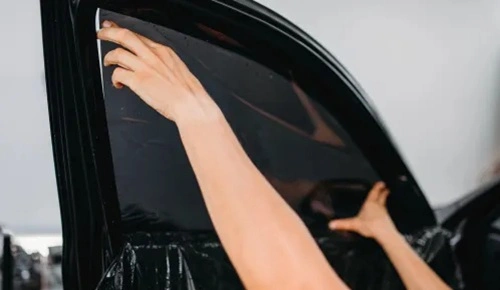If you are driving in Texas or planning to bring a vehicle there, it’s important to know the rules about window tinting. The state of Texas has clear regulations about how dark your car windows can be tinted, and these are actively enforced. In this article, we break down the window tint legal limits, what the technical terms mean, and how you can stay compliant.

Understanding Key Terms
- VLT (Visible Light Transmission): This is the percentage of visible light that can pass through your window film plus the glass. A lower VLT number means darker tint.
- AS-1 Line: For the windshield, this refers to a mark or line on the glass (or top five inches) above which tinting is allowed.
- Reflectivity: This is how much the glass surface reflects light. High reflectivity tints (mirror-like) can be illegal or controlled.
- Certification/Sticker: Under Texas law, professionally installed films often come with a sticker/certificate between the film and glass to show compliance.
Legal Tint Limits in Texas
According to state rules and up-to-date guides:
1. Front Side Windows (driver & passenger front doors)
- Must allow at least 25% of visible light through (i.e., VLT ≥ 25%).
- Reflectivity (how mirror-like the film is) must not exceed 25% on front side windows.
2. Windshield
- Tint is allowed only on the top 5 inches of the windshield or above the AS-1 line (whichever is the lesser) for normal passenger vehicles.
- The allowed tint on that top strip must be non-reflective and must comply with the VLT/visibility rules (effectively similar to front side windows).
3. Rear Side Windows (back doors) & Rear Window (back of vehicle)
- For sedans and similar passenger vehicles: there is no specific darkness limit (i.e., any darkness) for rear side windows or the rear window, provided the vehicle has dual side-mirrors when the rear window is tinted dark.
- However, if the vehicle does not have dual side mirrors, then the rear window must meet the same 25% minimum VLT as the front windows.
4. Prohibited Tint Colours & Other Requirements
- Colours like red, amber and blue are not permitted for window tint on windshields or side windows.
- The certification sticker must be placed between the film and the glass on the driver’s side window. Missing this sticker can lead to citation even if darkness is technically legal.
What Happens If Your Tint Is Illegal?
If your tint does not comply with Texas law:
- You may get a fix-it ticket, meaning you’ll be ordered to remove or reduce the tint to legal level.
- You may receive a fine. Local jurisdictions may vary the amount, but it can run into hundreds of dollars if repeated.
- During vehicle inspection (where applicable), the film might cause your vehicle to fail and require removal or correction before you can register or renew.
Medical Exemption
Yes, Texas does permit special darker tint under medical exemption for drivers who have conditions like skin sensitivity, lupus, or other illnesses requiring reduced sun exposure. In such cases:
- You must have a signed statement by a licensed physician or optometrist.
- You must carry the exemption certificate with you in the vehicle while driving.
- Even under exemption, safety rules about visibility and installation still apply.
Tips to Stay Legal & Safe
- Before tint installation, ask for documentation: the film’s VLT rating, the compliance certificate/sticker, installer’s guarantee.
- Ensure your chosen film plus any factory tint does not reduce front side windows below 25% VLT. Sometimes factory tint + film = illegal without realising it.
- Choose non-reflective films, avoid prohibited colours (red/amber/blue), and make sure side mirrors are in place if you heavily tint the rear window.
- If pulled over, law enforcement may use a tint meter. Having proof of legal film helps.
- If you are transferring a vehicle into Texas from another state, check whether the existing tint meets Texas rules and correct it if needed.
Summary
In short: for 2025 in Texas, the darkest legal tint for front side windows is one that allows at least 25% of light to pass (VLT ≥ 25%). The windshield allows tint only on the top strip (5 inches or AS-1 line) and must be non-reflective. The rear windows offer more flexibility (any darkness) if dual side-mirrors exist. Always ensure your tint meets the visibility, reflectivity, and colour requirements. Staying legal means avoiding fines and ensuring safe driving conditions.

